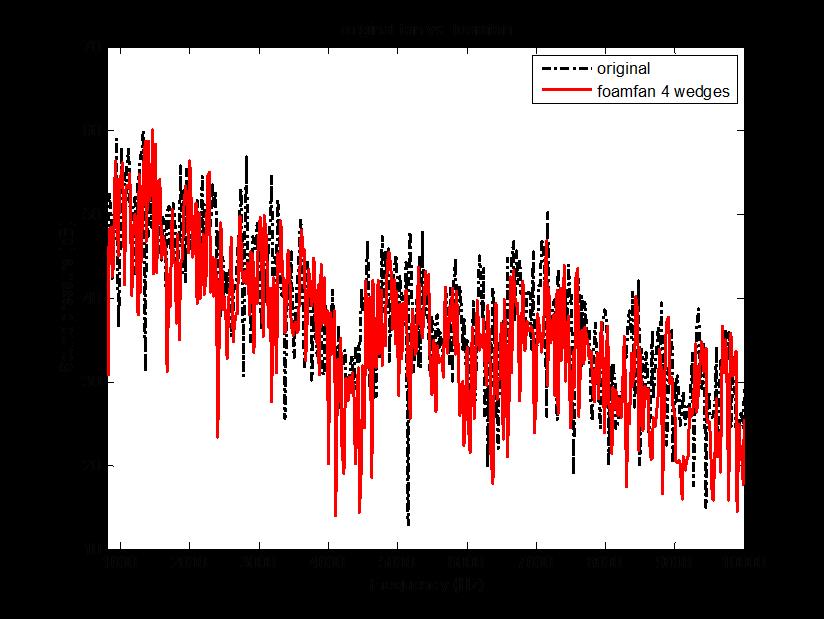
Yi Liu – Yi.Liu@irco.com
Percy Wang – Percy.Wang@irco.com
Ingersoll Rand
Popular version of paper 2aSA6
Presented Tuesday morning, December 3, 2013
166th ASA Meeting, San Francisco
Centrifugal fan noise is a major noise source contributor for most applications in aerospace, automotive, and construction industries. Government regulations require quieter applications in recent years. Therefore, it is more important to control noise source than before. It has been observed that fan noise is composed of discrete tonal noise and broadband noise. Discrete tonal noise sometimes is extremely annoying because of poor sound quality. It is well known that discrete tonal noise results from deterministic forces when a rotating blade interacts with cut-off or surrounding structures. For a blower fan, the interaction between housing tongue (cut off) and each blade creates a distinctive noise which is quite annoying in some cases. Our ultimate goal is to propose a prototype fan which can reduce the interaction and thus create quieter fan applications.
Fig. 1 illustrates the first attempt to use foam inserts between blades to demonstrate the feasibility of tonal noise reduction. These foams have cavities which allow air to pass through them but restrict turbulence when the blade moves close to the cut-off. In Fig. 2, the baseline frequency spectrum (without foam inserts) is plotted in a black dot-dash line, and the spectrum of four wedges inserted between blades is plotted in a red solid line. The results indicated the modified fan can achieve more than a 10 dB reduction at the 3000 Hz range, and a 8 dB reduction in the 5000 Hz range.

Fig. #1: Foam fan prototype

Fig. #2: Sound pressure (dB) comparison between foam fan and the original fan
Our next step is to build a prototype foam fan for industry application. We need to make sure that the air flow is not severely affected and the prototype can withstand durability and a high temperature environment.
References:
J. Wang, M. Kompella, and M. Pisupati, "Cooling Fan Noise Reduction by Optimizing Spacing of Blades," Proceedings of 159th ASA & Noise-Con (2010)
D. Barbu, F. Taraboanta, "Active Noise Control of Axial Fans,", The Annals of University Dunarea De Jos OF Calati Fascicle VIII, ISSN 1221-4590 TRIBOLOGY (2000).
L. Huang, "Suppression of ducted diploe noise by an expanded segment around the source," Proceedings of Noise-con 2010 (2010).
T. Moore, "The effect of non-uniform insert pitch on noise generation during face milling operations," (1985?).
J.H. Varterasian, "A White Noise Milling Cutter to suppress chatter, " G.M. Corp, Research laboratories, Report GMR-1044 14pp. (1970)
Y.S. Shin and J. S. Bolton, "Surface Integration method used on semi-solid surface for fan noise prediction," J. Acoust. Soc. Am. 127(3), 1838(2010).
Constant Sound Power Fan Curves for Small Air-Moving Devices, ECMA International Technical Report (2010)
I. J. Sharland, "Sources of noise in axial flow fans", Journal of Sound and Vibration, Vol. 1, P. 302-322, 1964
M. V. Lowson, "Theoretical Analysis of Compressor Noise", J. Acoust. Soc. Am. 47, 371-385, (1970).
William Blake, Mechanics of Flow-Induced Sound and Vibration, Academic Press, Inc.
Matthew P. Allen, Analysis and Synthesis of Tonal Aircraft Noise Sources, NASA, 20120010346_2012010445